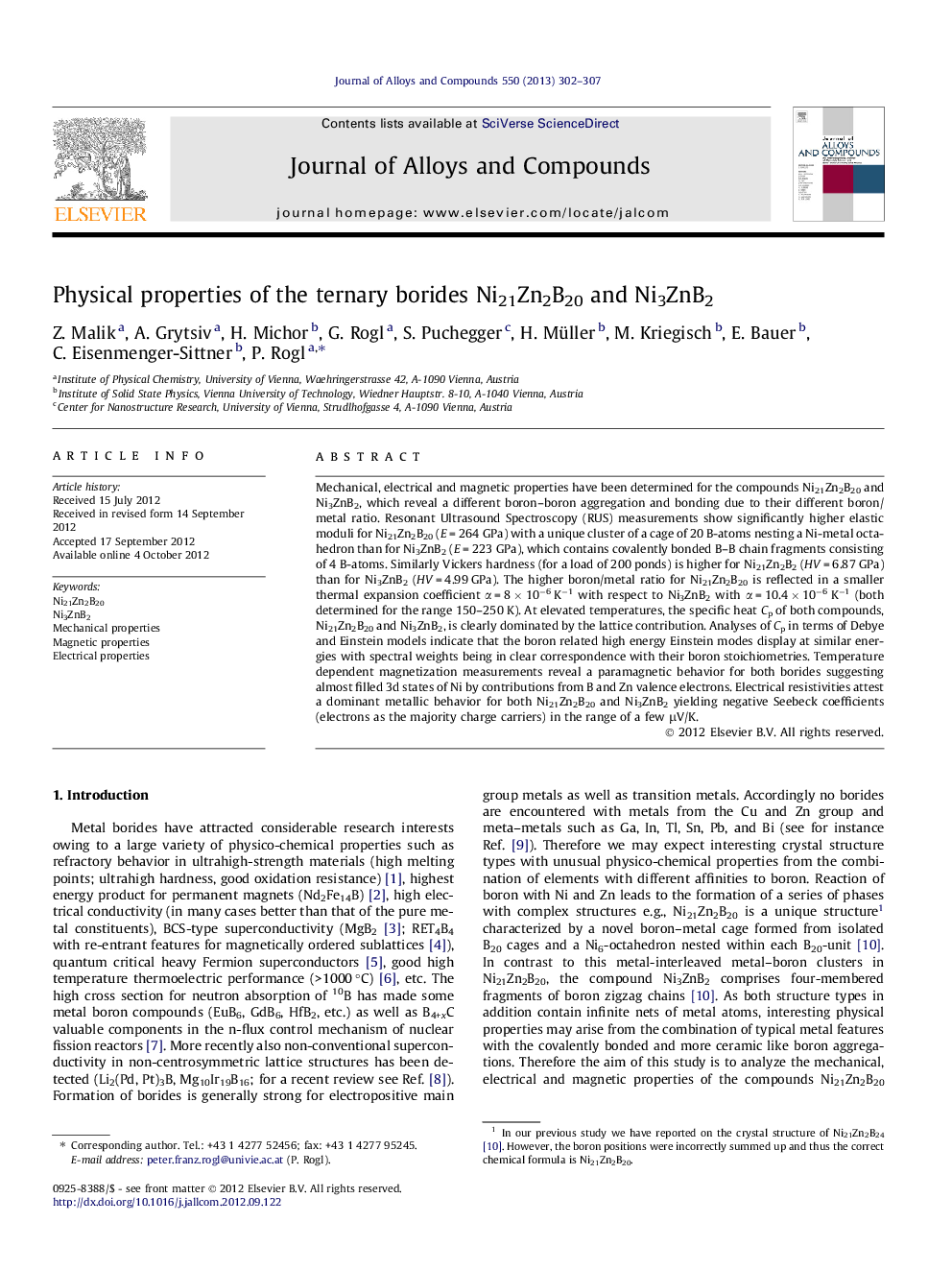| کد مقاله | کد نشریه | سال انتشار | مقاله انگلیسی | نسخه تمام متن |
|---|---|---|---|---|
| 1615087 | 1516343 | 2013 | 6 صفحه PDF | دانلود رایگان |

Mechanical, electrical and magnetic properties have been determined for the compounds Ni21Zn2B20 and Ni3ZnB2, which reveal a different boron–boron aggregation and bonding due to their different boron/metal ratio. Resonant Ultrasound Spectroscopy (RUS) measurements show significantly higher elastic moduli for Ni21Zn2B20 (E = 264 GPa) with a unique cluster of a cage of 20 B-atoms nesting a Ni-metal octahedron than for Ni3ZnB2 (E = 223 GPa), which contains covalently bonded B–B chain fragments consisting of 4 B-atoms. Similarly Vickers hardness (for a load of 200 ponds) is higher for Ni21Zn2B2 (HV = 6.87 GPa) than for Ni3ZnB2 (HV = 4.99 GPa). The higher boron/metal ratio for Ni21Zn2B20 is reflected in a smaller thermal expansion coefficient α = 8 × 10−6 K−1 with respect to Ni3ZnB2 with α = 10.4 × 10−6 K−1 (both determined for the range 150–250 K). At elevated temperatures, the specific heat Cp of both compounds, Ni21Zn2B20 and Ni3ZnB2, is clearly dominated by the lattice contribution. Analyses of Cp in terms of Debye and Einstein models indicate that the boron related high energy Einstein modes display at similar energies with spectral weights being in clear correspondence with their boron stoichiometries. Temperature dependent magnetization measurements reveal a paramagnetic behavior for both borides suggesting almost filled 3d states of Ni by contributions from B and Zn valence electrons. Electrical resistivities attest a dominant metallic behavior for both Ni21Zn2B20 and Ni3ZnB2 yielding negative Seebeck coefficients (electrons as the majority charge carriers) in the range of a few μV/K.
► First time physical properties are given for Ni21Zn2B20, Ni3ZnB2, which differ in B-B aggregation.
► The higher B/M ratio infers higher elastic moduli, Vickers hardness but smaller thermal expansion.
► Cp of both compounds at elevated temperatures is dominated by the lattice contribution.
► A paramagnetic behavior is found for both compounds.
► Electrical resistivities ensured a metallic behavior for both Ni21Zn2B20 and Ni3ZnB2.
Journal: Journal of Alloys and Compounds - Volume 550, 15 February 2013, Pages 302–307